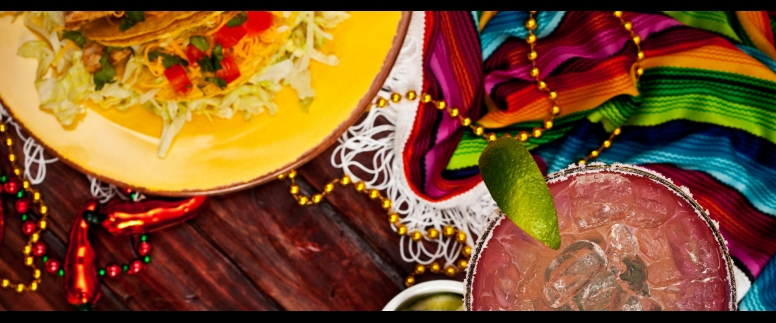
The “History” of Cinco de Mayo
Cinco De Mayo is not about Mexico. The picture accompanying this piece displays the full range of the holiday. In Truth, America has an entire slate of Drinking Holidays that tend to occur about every couple of months. They are specifically designed that way. Take a look at the calendar; they are doled out equally to focus on drinking for different reasons, each one somehow important to the American public. In reverse order, just to be different, they are:
Halloween
Labor Day
Fourth of July
Cinco de Mayo
St. Patrick's Day
Super Bowl Sunday
New Year's Eve
American Bars wants to be straight up front and honest. Today is Cinco De Mayo. It is a prime drinking holiday and people across the U.S. celebrate it as such.

However, keep in mind that it's not a holiday in Mexico. Americans give it a Mexican theme, but except in the little town of Puebla, where the small skirmish took place, nowhere south of the border it is to be found as an event.
What is the story behind it? In 1861, Benito Juárez (1806-1872) became president of a country in financial ruin, and he was forced to default on his debts to various European governments. In response, France, Britain and Spain sent naval forces to Veracruz to demand reimbursement. Britain and Spain negotiated with Mexico and withdrew. However, France, ruled by Napoleon III (1808-1873), decided to use the opportunity to carve a dependent empire out of Mexican territory. Late in 1861, a well-armed, but French fleet stormed Veracruz, landing a large French force and driving President Juárez and his government into retreat.
Certain that success would come swiftly, 6,000 lackluster French troops under a very overconfident General Charles Latrille de Lorencez (1814-1892) set out to attack Puebla de Los Angeles, (no, not THE Los Angeles) a small town in east-central Mexico. From his new headquarters in the north, Juárez rounded up a rag-tag force of 2,000 loyal men—many of them either indigenous Mexicans or of mixed ancestry—and sent them to Puebla. The secret here is that the scrappy little force was led by a Texan with combat experience, Ignacio Zaragoza (1829-1862). The vastly outnumbered and poorly supplied Mexicans fortified the town and prepared for the French assault. They had strategy and familiarity of the terrain on their side.

On May 5, 1862, the arrogant Lorencez led an assault from the north. The battle lasted from daybreak to early evening, and when the smoke cleared, the French had retreated with major losses of nearly 500 soldiers. Fewer than 100 Mexicans had been killed in the clash.
No, this was not a major strategic victory, but only a temporary forestallment. One year later the French returned with a vengeance and wiped the map clear. However, for the moment Zaragoza’s success at Puebla represented a great symbolic victory for the Mexican government and bolstered the resistance movement for the long term. Six years later—thanks in part to military support and political pressure from the United States, which was finally in a position to aid its besieged neighbor after the end of the Civil War—France withdrew. Puebla de Los Angeles was renamed for Zaragoza, who died of typhoid fever mere months after his historic triumph there.
So, there you have it. A minor skirmish that resulted in a temporary victory in a war that was lost a year later. It is not remembered, honored, nor celebrated in Mexico outside of the little town where it occurred.
Why is it is such a huge deal in the U.S.?
It falls perfectly into a calendar slot between St. Patrick’s Day and July 4th, the two drinking holidays that bracket it. Essentially, it is an invented holiday, much like a generation ago Halloween was a kid’s celebration. Then, trick-or-treat was transformed into an Adult bacchanalia, akin to Mardi Gras. Yes, the clever Madison Avenue representatives of our beloved suppliers of all things alcohol-related, elevated it and all the others on the calendar into a year long mixed cocktail with a new round arising every two months.

So, Drink up and celebrate Cinco De Mayo. It really has nothing to do with Mexico, but it is a great excuse to wear a sombrero, listen to great Mariachi music, imbibe on Mexico’s finest along with feasting on the fabulous ethnic cuisine.
Vivo Alegre!




